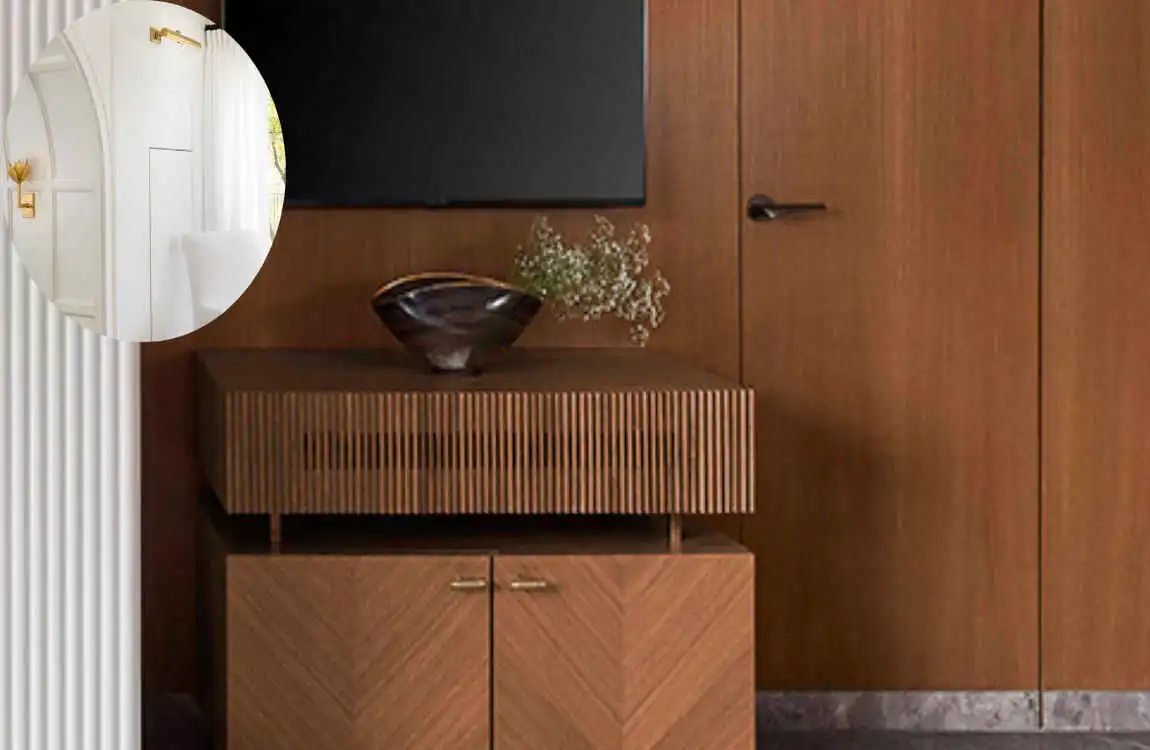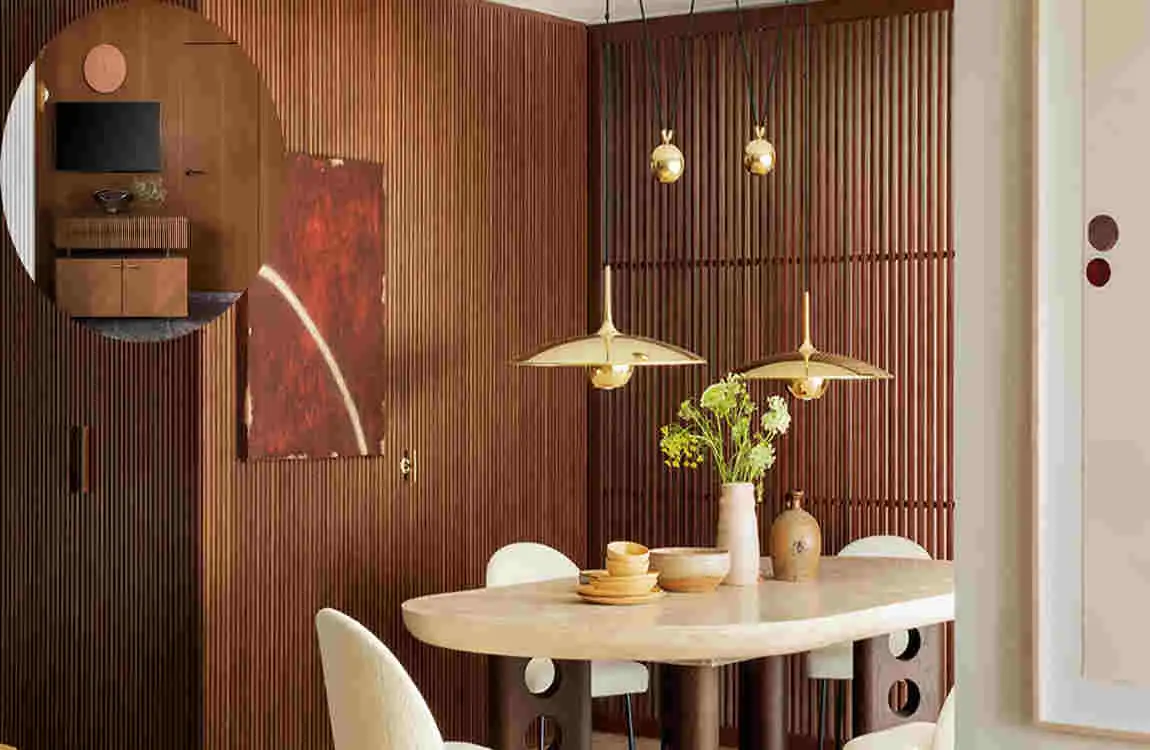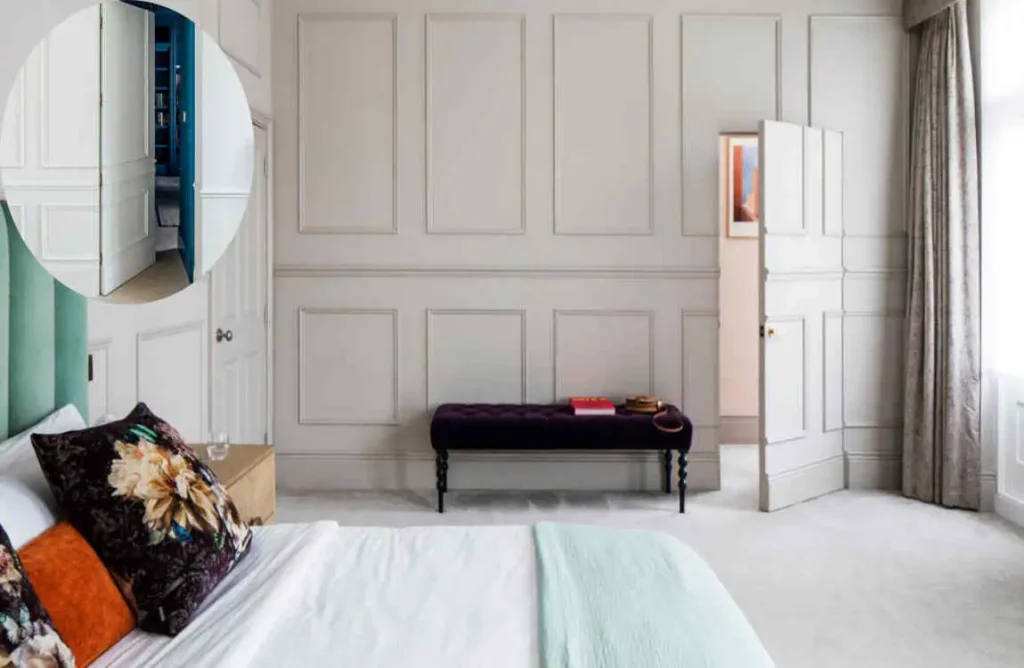Unused doors in a home are a surprisingly common issue. Perhaps the door leads to a room you no longer use, or it opens to an awkward space, such as a closet or an outdoor area that’s no longer accessible. Whatever the reason, having an unused house door can be more than just a minor inconvenience—it can disrupt the look of your room and make your space feel cluttered or unfinished.
Understanding the Reasons to Hide an Unused Door

Before exploring solutions, it’s essential to understand why homeowners want to conceal these doors in the first place. There are several key reasons:
Aesthetic Reasons: Enhancing Room Design and Flow
An unused door can feel like an eyesore, breaking the visual flow of a room. It may clash with your decor or interrupt a wall that could otherwise showcase artwork or furniture. Concealing the door helps create a cleaner, more harmonious environment.
Security and Privacy
Sometimes, an unused door leads to areas where you want to limit access, such as a utility room or basement. Hiding the door can keep curious guests from wandering in or reduce distractions caused by seeing through glass panels or open doorways.
Energy Efficiency
Drafts sneaking in through an old or unused door can increase heating and cooling costs. Blocking off a door or sealing it visually can help reduce heat loss, making your home more energy-efficient and comfortable.
Space Optimization
Unused doors occupy valuable wall space that could be used for storage or decorative elements. By hiding the door, you can maximise usable space, especially in smaller rooms or apartments where every inch counts.
Why These Reasons Matter
When homeowners realise the practical and visual impact of unused doors, they start looking for the best ways to hide them effectively. Whether it’s for a quick fix or a long-term solution, the goal is to blend the door into the room so naturally that it almost disappears from sight.
Assessing Your Door and Surrounding Area
Before deciding which method to use, take the time to evaluate your door and the surrounding space carefully. This planning step ensures your chosen solution fits well and avoids surprises.
Identify Door Type
- Is the door interior or exterior?
- Does it slide, swing on hinges, or fold?
- These details affect your options—covering a sliding door is different from blocking a hinged exterior door.
Measure Door Dimensions and Wall Space
Accurate measurements help you select furniture, panels, or paint designs that fit perfectly. Don’t forget to measure the height, width, and depth of the door frame, as well as available wall space nearby.
Check Structural Considerations
Some walls are load-bearing or may hide electrical wiring, plumbing, or HVAC ducts behind them. If your door is on such a wall, you’ll need to be cautious about permanent modifications or seek professional advice.
Evaluate Door Condition
Is the door in good shape or damaged? Sometimes, a worn-out door is better removed or replaced. Other times, simply concealing it works best.
Importance of Planning
Taking these steps before starting saves time, money, and frustration. Proper planning ensures that your approach to hiding an unused door is both practical and safe.
Easy DIY Methods to Hide Unused Doors

If you’re looking for quick and budget-friendly ways to hide your unused door, DIY methods are the way to go. Here are some popular options:
Painting and Wall Treatments
Camouflage With Paint or Murals
One of the simplest tricks is to paint the door the same colour as the surrounding wall. This creates an illusion that the door isn’t there. For a more creative touch, consider incorporating murals or artistic patterns to disguise the door while adding character to your space.
Wallpaper or Textured Finishes
Applying wallpaper over the door that matches the wall’s pattern is another excellent way to blend it in. Textured finishes, such as plaster or wood panelling, can also effectively mask the door surface.
Decorative Solutions
Artwork and Tapestries
Hanging a large painting, tapestry, or fabric panel over the door features can divert attention from it. This method is easy to change and adds a decorative element to the room.
Permanent Structural Modifications
For those seeking a long-term solution with a clean finish, permanent changes offer the best results.
Removing or Filling in the Doorway
This involves framing over the door opening and installing drywall to create a solid wall. The steps generally include:
- Removing the door and frame
- Building a stud frame in the doorway
- Installing drywall sheets and finishing with paint or wallpaper
Considerations:
- May require permits depending on local codes
- Professional help is recommended, especially for exterior doors or load-bearing walls
Installing a False Wall
A false wall is built in front of the outdoor, creating a seamless barrier. This can include insulation for soundproofing or energy efficiency.
Finishing Tips:
- Use drywall, panelling, or wood cladding
- Paint or wallpaper to match the room
Converting Door to Functional Feature
Rather than hiding the door completely, transform it into a feature:
- Turn it into a bookshelf by adding shelves on or around it
- Install sliding barn doors or painted panels to make the door a design highlight instead of an eyesore
Long-Term Benefits
Permanent modifications can enhance a home’s value by improving both its aesthetics and functionality. They also eliminate drafts and improve room flow.
Using these permanent methods is a solid solution for hiding an unused door if you want a professional, polished look.
Creative and Trendy Ideas for Concealing Doors
For those who want to add personality while hiding doors, creative ideas can be both functional and fun.
Mirrors to Expand Space
Mounting a large mirror over the door can disguise it and make the room appear larger and brighter. This is especially effective in small rooms or hallways.
Chalkboard or Blackboard Paint
Painting the door with chalkboard paint allows you to create a functional message board or art space, transforming the door into a playful feature.
Gallery Wall or Photo Collage
Cover the door with framed photos or art pieces arranged as a gallery wall. This draws attention to the display and away from the door itself.
Architectural Integration
Incorporate the door design into wall panelling, moulding, or built-in features. This approach blends the door seamlessly with other design elements, making it virtually invisible. Choosing the right solution depends on several factors:
